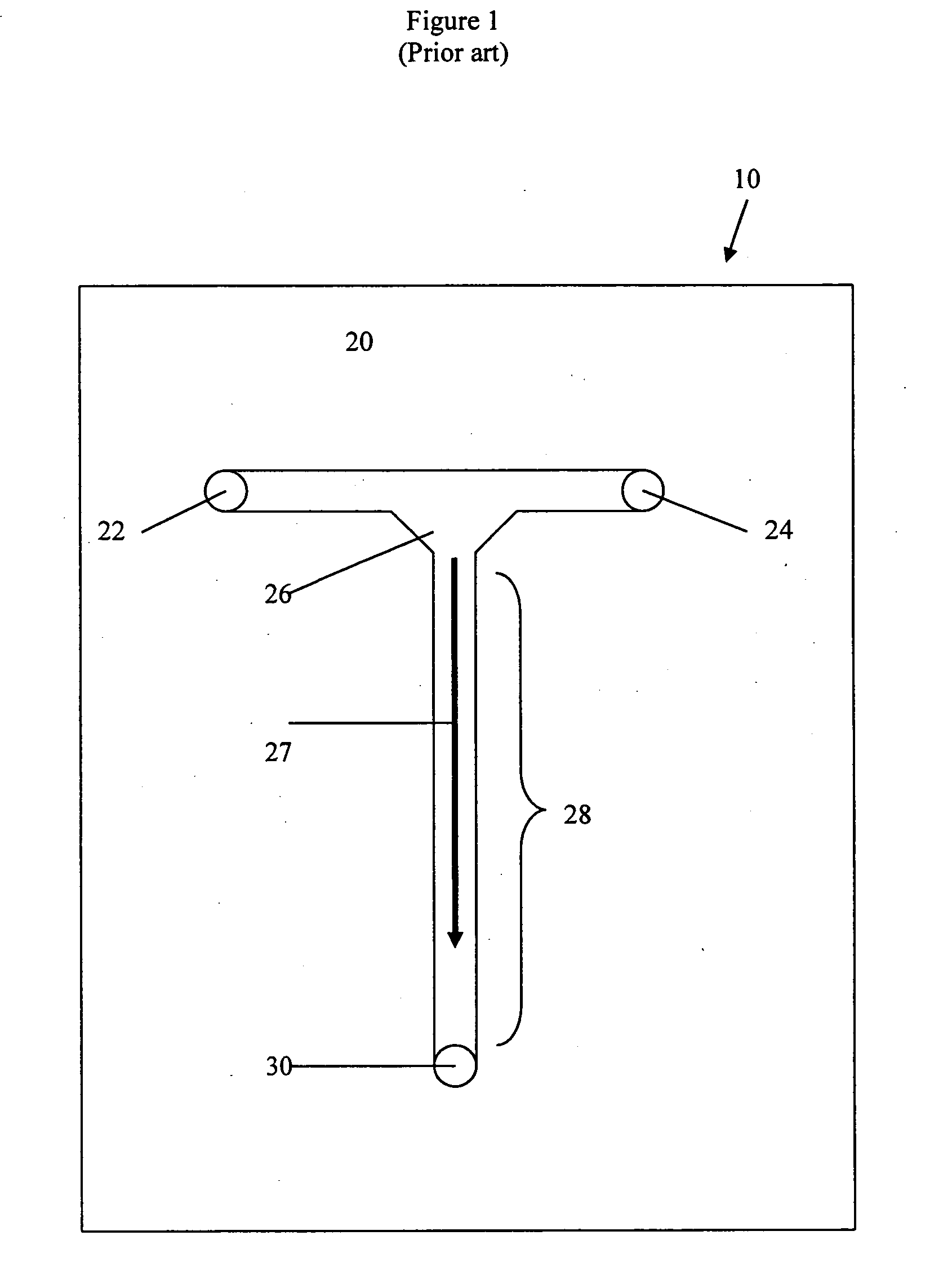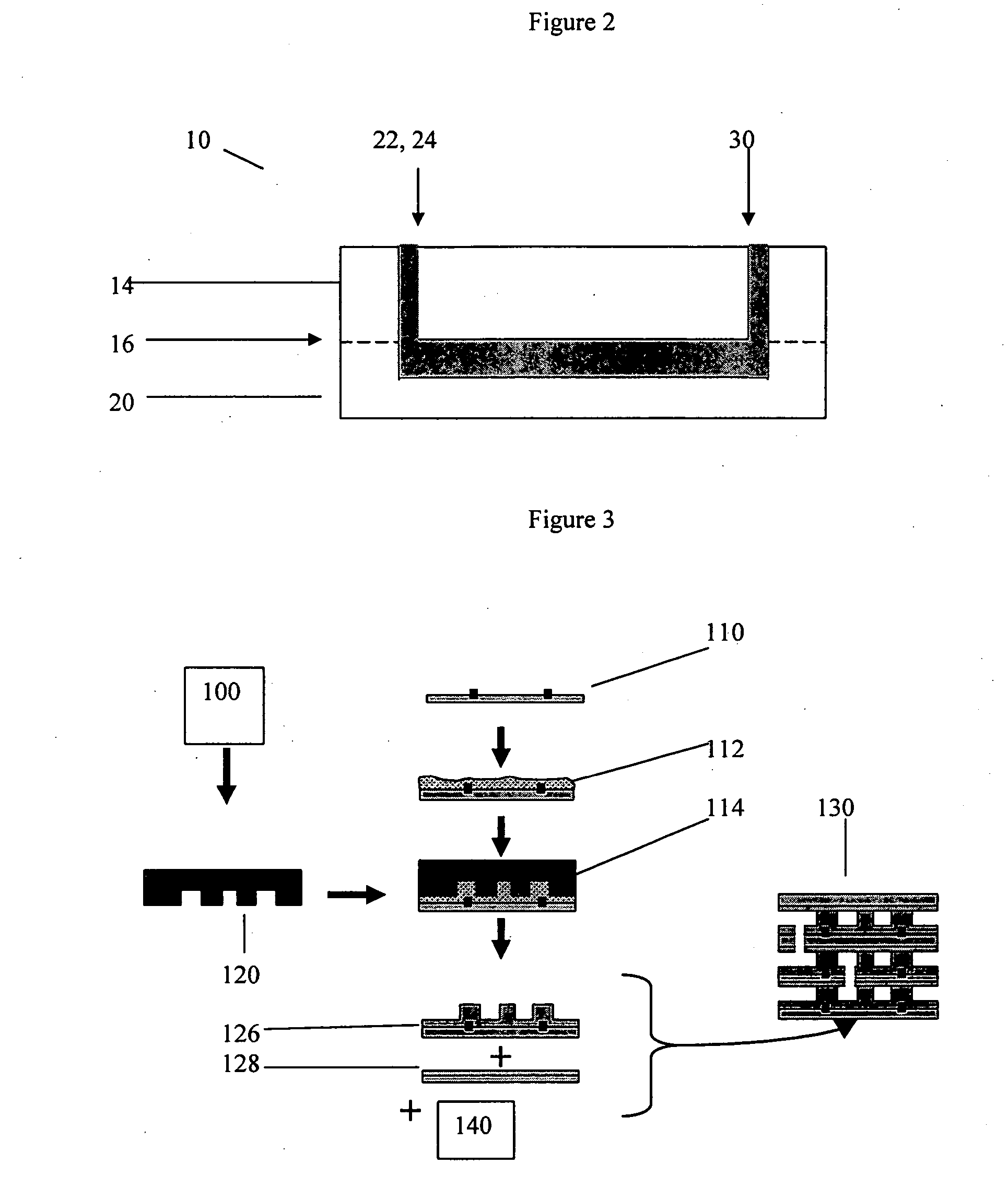Crystallization-free glass frit compositions and frits made therefrom for microreactor devices
a technology of crystallization-free glass and compositions, which is applied in the field of crystallization-free glass frit compositions and frits made therefrom for microreactor devices, can solve the problems of complex design, high cost, and complex design of the reactor itself, and achieves high acid and alkali chemical resistance, low softening point, and high crystallization resistance
- Summary
- Abstract
- Description
- Claims
- Application Information
AI Technical Summary
Benefits of technology
Problems solved by technology
Method used
Image
Examples
Embodiment Construction
[0035] A process for the manufacturing of microreactors can be based on micro-molding of glass frit structures onto a substrate and then covering the frit with an appropriate cover layer of material. This process is based on the micro-molding techniques disclosed in U.S. Pat. No. 5,853,446 (the '446 patent) that are used to make formed glass structures that are particularly useful for forming barrier rib structures for use in plasma display units.
[0036]FIG. 2 of the '446 patent illustrates a frit bonded (adhered) to the substrate. To make a microreactor, two substrates (first or bottom and second or top substrates) would be used and the frit would be sandwiched between them as illustrated in FIG. 4 of this application.
[0037] One process for making a microreactor uses two firing steps to consolidate frit structures. The first firing step or heat treatment, called “pre-sintering”, is made at a temperature at which the viscosity of the frit is approximately 1×1010 poise and for a tim...
PUM
| Property | Measurement | Unit |
|---|---|---|
| softening point | aaaaa | aaaaa |
| softening point | aaaaa | aaaaa |
| softening point | aaaaa | aaaaa |
Abstract
Description
Claims
Application Information
 Login to View More
Login to View More - R&D
- Intellectual Property
- Life Sciences
- Materials
- Tech Scout
- Unparalleled Data Quality
- Higher Quality Content
- 60% Fewer Hallucinations
Browse by: Latest US Patents, China's latest patents, Technical Efficacy Thesaurus, Application Domain, Technology Topic, Popular Technical Reports.
© 2025 PatSnap. All rights reserved.Legal|Privacy policy|Modern Slavery Act Transparency Statement|Sitemap|About US| Contact US: help@patsnap.com



